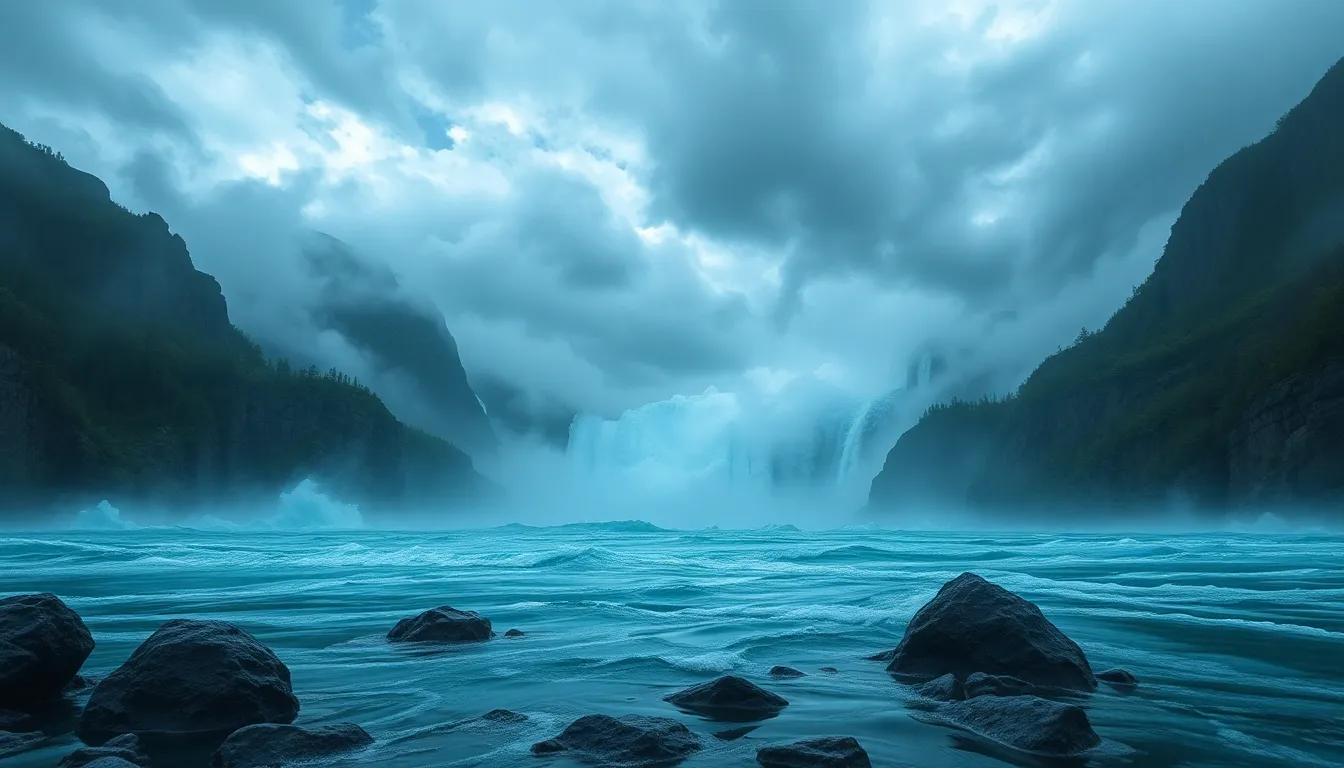The Science Behind the Myths: What Flood Legends Teach Us About Nature
I. Introduction
Throughout history, cultures around the globe have shared stories of catastrophic floods. These flood myths, from the biblical tale of Noah’s Ark to the ancient Mesopotamian Epic of Gilgamesh, serve as powerful narratives that reflect humanity’s relationship with nature. Understanding these legends not only illuminates cultural values and fears but also offers insights into the natural phenomena that inspired them.
This article aims to explore the intersection of myth, science, and environmental awareness, highlighting how flood legends serve as both a warning and a source of wisdom regarding the impacts of natural disasters.
II. The Global Presence of Flood Myths
Flood myths are prevalent across various cultures, each presenting unique interpretations while sharing common themes. Some notable examples include:
- Noah’s Ark (Judeo-Christian tradition) – A divine warning leads Noah to build an ark, saving his family and pairs of animals from a great flood sent by God.
- The Epic of Gilgamesh (Mesopotamia) – Utnapishtim, a character in this ancient epic, survives a flood sent by the gods to cleanse humanity.
- Deucalion and Pyrrha (Greek mythology) – The couple survives a flood sent by Zeus, and they repopulate the earth by casting stones that turn into humans.
Despite the geographical and cultural differences, these myths commonly convey themes of survival, rebirth, and moral lessons about humanity’s relationship with nature.
The historical context of these myths often correlates with ancient civilizations’ experiences with natural disasters, reflecting the realities of flooding events that shaped their societies.
III. Natural Disasters and Their Influence on Mythology
Catastrophic floods have profoundly influenced community narratives throughout history. These events often serve as catalysts for myth-making, with communities creating stories to explain and cope with the devastation. Some key points include:
- Community Narratives: Floods often bring communities together, leading to collective storytelling as a means of processing trauma.
- Geological Evidence: Archaeological findings reveal evidence of ancient flooding events, such as glacial melts and tsunamis, which likely inspired many flood myths.
- Psychological Impact: The emotional and psychological toll of experiencing floods can lead to the creation of narratives that reflect fear, survival, and the need for resilience.
IV. The Science of Flooding: Understanding Causes and Effects
Flooding can occur due to various factors, and understanding these mechanisms is crucial for effective disaster management. The primary types of floods include:
- Riverine Floods: Occur when rivers overflow their banks due to excessive rainfall or snowmelt.
- Coastal Floods: Result from storm surges, high tides, or tsunamis impacting coastal areas.
- Flash Floods: Sudden and intense floods that occur within a short period, often caused by heavy rainfall in a localized area.
Scientific research has provided insights into the mechanisms behind flooding, including the role of climate change, which has been linked to increased precipitation and rising sea levels. These environmental implications underscore the urgency of addressing climate-related risks.
V. Myths as a Reflection of Environmental Awareness
Flood legends often convey ecological wisdom and moral lessons that resonate with contemporary environmental issues. These stories emphasize:
- Conservation: Many myths highlight the importance of respecting nature and the consequences of environmental neglect.
- Human Responsibility: Legends often serve as cautionary tales about the repercussions of human actions on the environment.
- Case Studies: Various myths illustrate the dire consequences of hubris, such as the tale of Deucalion, which warns against defying the natural order.
VI. Lessons from Flood Legends: Preparing for Modern-Day Disasters
The wisdom embedded in ancient flood myths remains relevant today, particularly in the context of disaster preparedness. Key takeaways include:
- Ancient Wisdom: Many cultures possess traditional knowledge about flood risks and survival strategies that can inform modern practices.
- Community Resilience: Cultural narratives can foster resilience by promoting unity and shared identity during recovery efforts.
- Influence on Practices: Some modern flood management practices are inspired by historical narratives, emphasizing the importance of community preparedness.
VII. The Interplay Between Science and Myth
Understanding the relationship between science and myth can enhance our comprehension of natural phenomena. Some important points include:
- Validation of Myths: Scientific findings can sometimes support aspects of flood myths, such as the occurrence of massive flooding events documented in historical records.
- Folklore’s Role: Folklore can guide scientific inquiry by highlighting areas of concern within communities, influencing environmental policies.
- Interdisciplinary Approaches: Bridging the gap between scientific research and cultural narratives can lead to a more holistic understanding of environmental challenges.
VIII. The Role of Art and Literature in Preserving Flood Myths
Art and storytelling play a crucial role in keeping flood myths alive for future generations. Notable aspects include:
- Preservation through Art: Visual art, literature, and performance can reinterpret flood myths, ensuring their relevance in contemporary society.
- Notable Works: Several literary works and films have drawn inspiration from flood legends, exploring themes of survival and rebirth.
- Modern Media Impact: Social media and digital platforms have transformed how these myths are shared and understood, reaching new audiences and sparking discussions on environmental issues.
IX. Conclusion
Flood myths serve as a rich tapestry of human experience, weaving together threads of culture, psychology, and environmental science. By examining these narratives, we gain insights into the natural disasters that shape our world and the lessons they impart about resilience and respect for nature. As we face increasing environmental challenges, the wisdom embedded in these ancient stories can guide us toward a more sustainable future.



